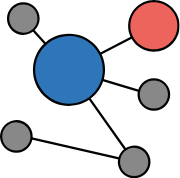Disability Assessment among Syrian Refugees in Jordan and Lebanon - 2018
Jordan, Lebanon, 2017 - 2018
Get MicrodataIdentification
HDX_iMMAP_JOR_LBN_2018_Barriers_vEXT
Disability Assessment among Syrian Refugees in Jordan and Lebanon - 2018
| Name | Country code |
|---|---|
| Jordan | JOR |
| Lebanon | LBN |
Demographic and Health Survey [hh/dhs]
Due to the lack of disability data in the Syria crisis context, Humanity & Inclusion (HI) and iMMAP conducted a disability assessment in 2017 and 2018 with the following objectives:
1.Provide statistically reliable data on the prevalence of disabilities as well as data on access to services disaggregated by disability.
2.Increase the understanding of the situation of Syrian refugees with disabilities and their households compared to their peers without disabilities in relation to access to services, including education.
3.Recommend inclusive actions to be prioritized by humanitarian actors.
Quantitative data was collected in Lebanon in December 2017 and in Jordan in between October 2017 and January 2018. In Lebanon, 2,495 refugees from 506 households were randomly sampled in urban settings in Bar Elias as well as Informal Tented Settlements (ITS) in Bar Elias and Arsal. In Jordan, 6,381 refugees were randomly sampled in 1,159 households in Azraq and Zaatari camps and Irbid. In light of the United Nations Convention on the Rights of Persons with Disabilities (UN CRPD), the study defined disability as interactions between personal and environmental factors. Disability was measured by the level of difficulties a person faces when performing basic activities (referred as “domains”) regardless of impairments, using the modified Washington Group’s Extended Set (WG-ES) (more precisely, Short Set Enhanced plus fatigue) and Child Functioning Module (CFM).
Sample survey data [ssd]
Households
Version
v2.1: Edited, anonymous dataset for public distribution
Scope
Disability: prevalence of disability, causes, domains, children's disabilities
Access to services: UNHCR Registration, shelter, latrines, water, health, food and cash assistance, specialized services
Livelihood
Education: children and adults
| Topic |
|---|
| Elderly and Disabled |
| Health |
| Protection |
| Emergency Shelter and NFI |
| Community Services |
| Education |
| Livelihood & Social cohesion |
| Child Protection |
| Shelter/Other Infrastructure |
| Domestic Needs/Household Support |
| Health Care Referral Services |
Coverage
Jordan: Azraq, Zaatari and Irbid camps
Lebanon: Urban setting in Bar Elias as well as Informal Tented Settlements (ITS) in Bar Elias and Arsal
All households in selected camps
Producers and sponsors
| Name |
|---|
| Humanity and Inclusion |
| iMMAP |
| Name |
|---|
| Australian Aid |
Sampling
Lebanon: Random sampling was adopted to reflect and compare the experiences of both registered and non-registered Syrian refugees with the United Nations High Commissioner for Refugees (UNHCR), as well as of both persons with and without disabilities. For Bar Elias, a random sample was generated covering all parts of the town. For ITS, random shelters were selected by satellite
Jordan: Random sampling was adopted to reflect and compare the experiences of both registered and non-registered Syrian refugees with United Nations High Commissioner for Refugees (UNHCR), as well as of both persons with and without disabilities.
- All the residents in Azraq and Zaatari camps are registered. A random sample of shelters was constituted using available data relating to the structure of the camps.
- Irbid is a city located North of Jordan’s capital Amman, and hosts approximately 20% of Syrian refugees in the country (UNHCR, 2018b). As there is no list of unregistered Syrian refugees in the city, the study employed twostage sampling. The first stage identified 3,600 random locations in the city, taking Irbid’s population density into account. Among these random locations, enumerators randomly visited households (including those of Jordanian families) until the Syrian refugee household/family sample size was large enough to enable generalization of statistical results to the entire study population.
Data collection
| Start | End |
|---|---|
| 2017-10-01 | 2018-01-31 |
| Name |
|---|
| iMMAP |
Enumerators were instructed to go to the identified locations and interview the household closest to the location. If the father of the household was Syrian, and the potential respondents (the mothers or caregivers of the children of those households) agreed to be interviewed, the enumerators would proceed with the survey. Among the identified Syrian households, information of all members was collected.
Metadata production
HDX_IMMAP_JOR_LBN_2018_Barriers_DDI_v1.1
| Name |
|---|
| HDX |
2021
